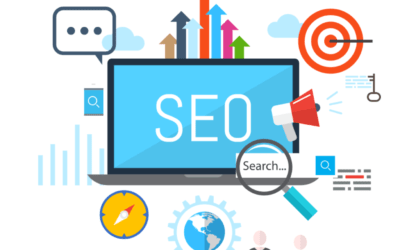5 Best Lead Generation Tools to Use in 2025
Generating quality leads is the backbone of any growing business. In 2025, having the right lead generation tools can make all the difference in how efficiently you attract, nurture, and convert potential customers. Whether you are a startup, SME, or B2B company, the right tools can help you scale without overspending.
But with hundreds of options available, how do you decide which tools are worth your time and money? In this blog, we’ll explore the top lead generation tools in 2025—both free and paid—that can help businesses of all sizes streamline their sales pipeline.
5 Best Lead Generation Tools to Use in 2025
1. LinkedIn Sales Navigator (Best for B2B Lead Generation)
LinkedIn is already the go-to platform for B2B networking, but LinkedIn Sales Navigator takes it to the next level. It provides detailed insights into your prospects, making it one of the best B2B lead generation platforms in 2025.
✅ Key Features:
- Advanced search and filtering to target the right audience
- Real-time alerts on job changes and company updates
- InMail credits to directly connect with decision-makers
- AI-driven suggestions to engage with the right prospects
💰 Pricing: Starts at $64.99/month (Professional) with a Team Plan available at $99.99/month.
📌 Example: A SaaS startup can use LinkedIn Sales Navigator to identify CFOs in mid-sized companies and reach out with personalized messages—drastically improving lead quality.
2. HubSpot CRM (All-in-One Lead Generation & Nurturing)
HubSpot is one of the best lead generation software for startups and SMEs. Not only does it help capture leads, but it also nurtures them through powerful CRM automation.
✅ Key Features:
- Smart forms to capture high-quality leads
- Tracks visitor behavior and provides insights
- Stores lead interactions for sales teams to follow up effectively
- Integration with email, ads, and content marketing campaigns
💰 Pricing: Free plan available; premium plans start at $20/month.
📌 Example: A digital marketing agency can use HubSpot to track where leads are coming from (Google Ads, social media, or email) and tailor campaigns for better conversions.
3. LeadQuizzes (Interactive Lead Capture)
Interactive content is trending in 2025, and LeadQuizzes is one of the top AI-powered lead generation tools for engagement. Instead of traditional forms, businesses can capture leads through fun, personalized quizzes.
✅ Key Features:
- Pre-built quiz templates for quick setup
- Easy integrations with CRM and email tools
- Segmentation of users based on quiz results
- Boosts engagement and conversions compared to static forms
💰 Pricing: Freemium model; Paid plans start at $22/month.
📌 Example: A fitness coach can create a “What’s Your Fitness Level?” quiz, collect emails at the end, and nurture leads with customized workout plans.
4. Zoom (Webinars for Lead Generation)
Webinars remain one of the most effective lead generation strategies in 2025. Zoom enables businesses to host live webinars and virtual events that capture leads while educating potential clients.
✅ Key Features:
- Host up to 100 participants for free (40 min limit)
- Screen sharing, recording, and collaborative whiteboards
- Integration with CRMs for seamless lead capture
- Affordable paid plans for scaling webinars
💰 Pricing: Free plan available; Pro starts at $14.99/month.
📌 Example: A consultancy firm can run a “Digital Marketing in 2025” webinar, capture sign-up details, and follow up with participants via email campaigns.
5. Mailchimp (Best for Email Marketing & Lead Nurturing)
Email is still king when it comes to nurturing leads, and Mailchimp remains one of the best email marketing and lead generation tools for small businesses.
✅ Key Features:
- Drag-and-drop email builder
- Advanced list segmentation
- Automation workflows for nurturing leads
- Analytics on campaign performance
💰 Pricing: Free plan includes 2,000 contacts and 12,000 emails/month. Paid plans start at $10/month.
📌 Example: An e-commerce store can use Mailchimp to segment leads into “first-time visitors,” “repeat buyers,” and “abandoned cart users” and send personalized email campaigns to increase conversions.
Frequently Asked Questions About Lead Generation Tools
Question 1. What are the best lead generation tools in 2025?
The top tools in 2025 include LinkedIn Sales Navigator, HubSpot, LeadQuizzes, Zoom (for webinars), and Mailchimp for email marketing.
Question 2. Why is LinkedIn Sales Navigator good for B2B lead generation?
It allows advanced audience targeting, real-time updates, and direct outreach to decision-makers, making it ideal for B2B sales teams.
Question 3. Is HubSpot free for lead generation?
Yes, HubSpot offers a free CRM with lead capture forms, contact management, and marketing tools. Paid plans provide advanced automation.
Question 4. How do quizzes help in lead generation?
Quizzes engage users, capture their contact info, and segment them based on responses—helping businesses personalize marketing.
Question 5. Can webinars generate leads for small businesses?
Absolutely. Hosting webinars via Zoom helps capture attendee details and nurture them through follow-up campaigns.
Question 6. Is Mailchimp still effective for email marketing in 2025?
Yes, Mailchimp remains one of the best email tools for startups, offering automation, segmentation, and a free plan for beginners.
Question 7. Which is the most affordable lead generation tool for startups?
Mailchimp and Zoom (free plans) are cost-effective options. LeadQuizzes also has a low-cost starter plan for interactive lead capture.
Question 8. What is the role of AI in modern lead generation tools?
AI helps automate lead scoring, personalize outreach, and predict buyer intent, improving efficiency in platforms like HubSpot and LinkedIn.
Question 9. Which tool should B2C businesses use for lead generation?
B2C companies benefit most from tools like Mailchimp (email), LeadQuizzes (engagement), and Zoom webinars to attract consumers.
Question 10. How do I choose the right lead generation tool for my business?
Consider your budget, target audience, and goals. Start with free tools, then upgrade to advanced platforms as your business scales.
Final Thoughts: Choosing the Right Lead Generation Tools
The best lead generation tools in 2025 aren’t just about collecting emails—they’re about creating meaningful connections, tracking customer journeys, and converting interest into revenue. Whether you’re a startup looking for affordable tools or a B2B company seeking advanced platforms, these tools can help you build a sustainable sales pipeline.
👉 If you’re still wondering which is the best lead generation tool for small businesses in 2025, the answer depends on your budget and goals. Start with free tools like Mailchimp or Zoom webinars, and gradually move to advanced platforms like LinkedIn Sales Navigator and HubSpot.
With the right strategy and software, you can turn your business into a lead generation machine.


